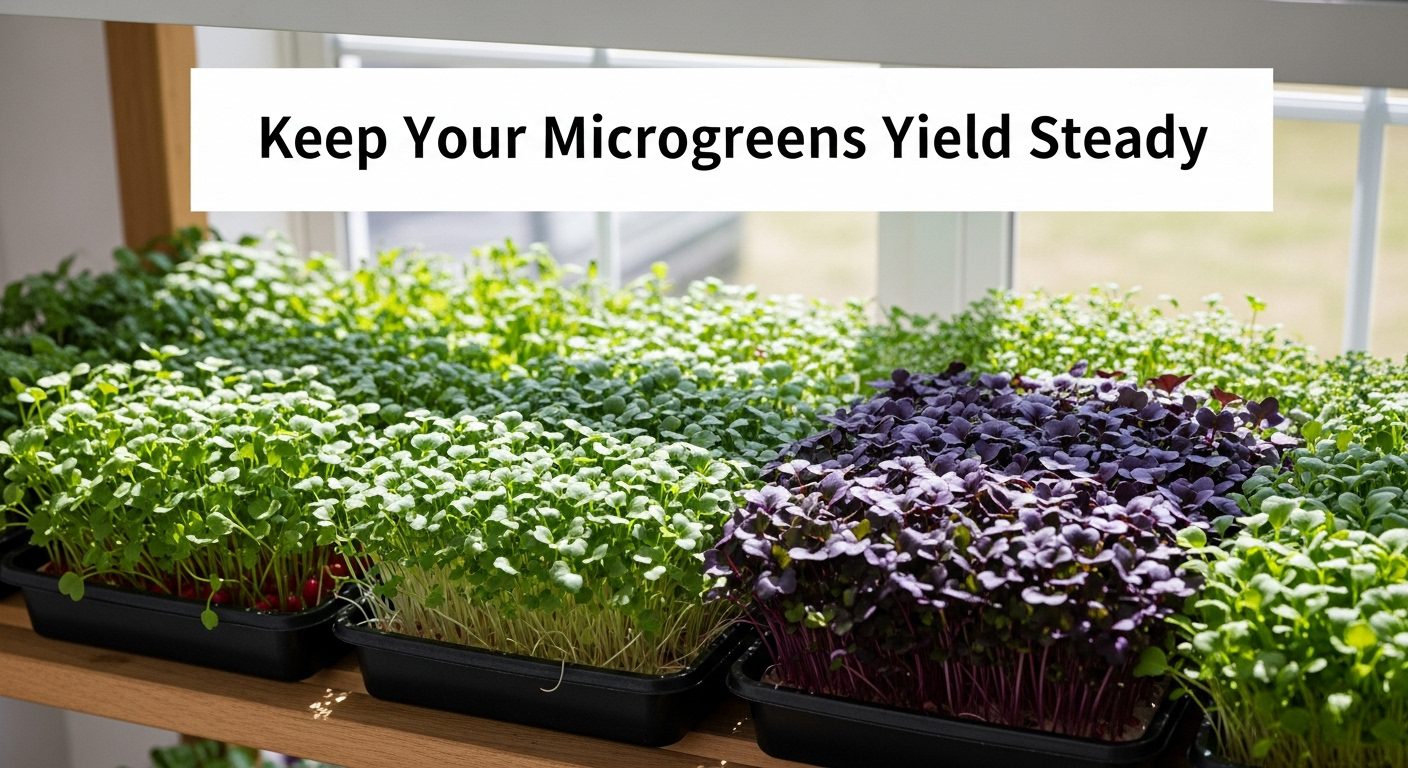
If you want to keep your plants and flowers safe and stylish, you have to check out the 8 best herbarium notebooks! These notebooks come in many sizes and styles to help you record your botanical collection.
For example, the 5.5 x 8.5 Top Spiral Bound Sketch Book is really handy because you can flip the pages easily. Plus, the Lined Journals add a special touch of elegance! Kids and beginners will love “My Herbarium Notebook,” while the compact Herbarium Mini Notebooks are great for taking on adventures.
With their beautiful designs and strong pages, these notebooks are not just useful but also pretty. Explore these options to find the perfect fit for your plant-collecting journey!
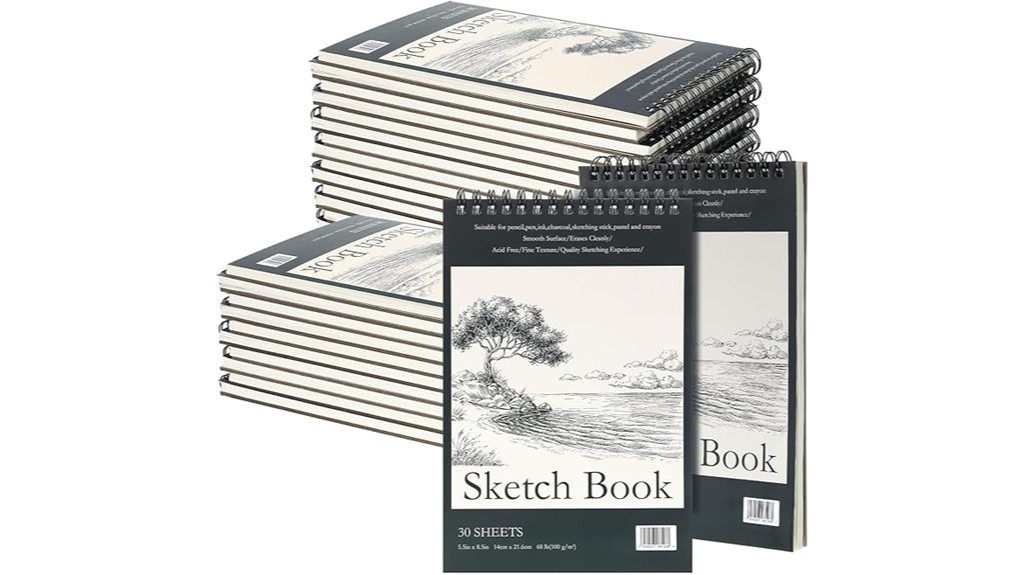
The 5.5 x 8.5 Top Spiral Bound Sketch Book is perfect for anyone looking to explore their creativity, whether you’re a seasoned artist or a beginner. With 40 pieces and 30 sturdy sheets each, you’ll have plenty of room to document your botanical finds. The high-quality 68lb paper handles erasing without damage, so feel free to experiment. Its top spiral binding allows for easy flipping, while the firm cardboard backing gives you the support you need. Ideal for sketching or writing, this versatile sketchbook is a great choice for classrooms, camps, or personal projects, enhancing your herbarium collection with style.
Best For: Artists, students, and hobbyists looking for a reliable sketchbook for drawing, writing, and creative projects.
Pros:
Cons:
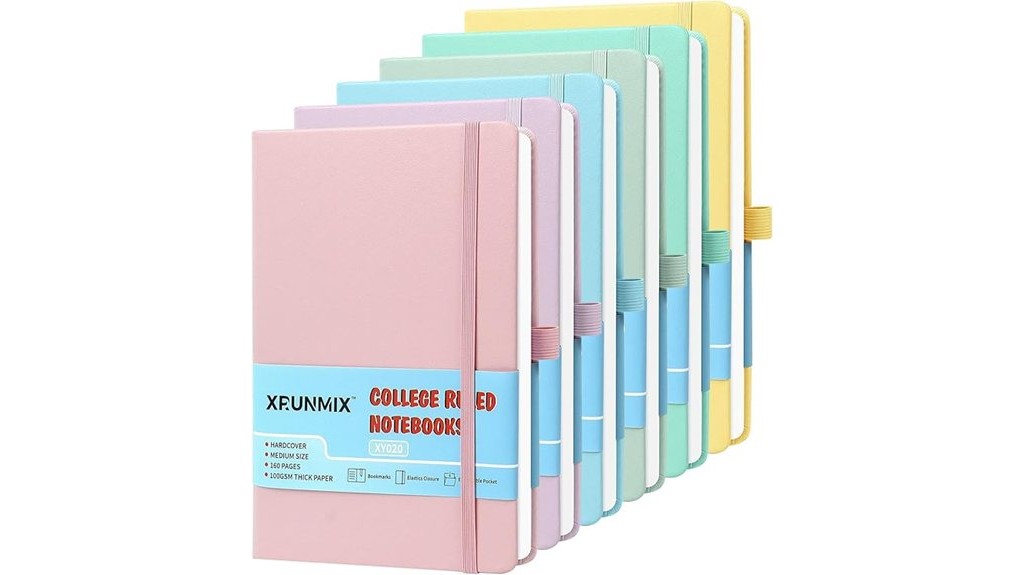
For those who thrive on organization, the Lined Journals Notebooks for Work (6 Pack) offer a perfect blend of functionality and style. Each notebook features 160 pages of 100 GSM paper, ensuring smooth, bleed-resistant writing. The hardcover design, combined with useful features like a ribbon bookmark, elastic band, and inner pocket, enhances usability. At 5.5 x 8 inches, they’re ideal for various tasks such as journaling, note-taking, or sketching. With six pastel colors, these notebooks are not only practical but also visually appealing, making them great gifts for any writer or professional in need of stylish organization.
Best For: Writers, students, and professionals looking for stylish and functional notebooks to organize their notes and thoughts.
Pros:
Cons:
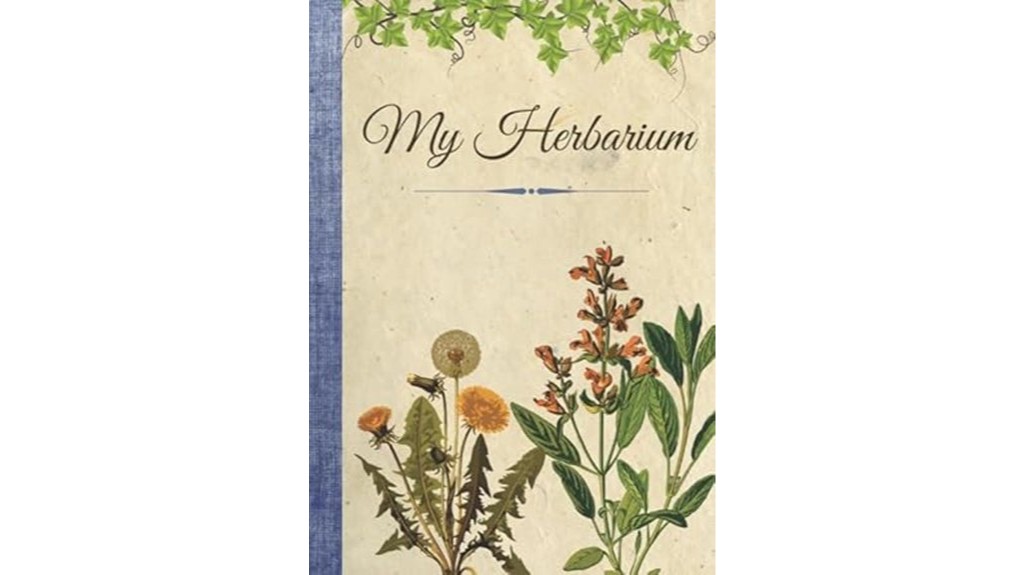
Searching for a perfect gift for budding herbalists? Seek no further than “My Herbarium: Notebook to Complete Sheets and Dried Flowers.” This A4-sized notebook, with 110 pages, is designed for documenting plant names and attaching your dried samples. It’s especially well-received as a birthday gift by those studying herbalism, inspiring them to forage and explore nature. While it lacks traditional page separators, many find it practical and fun, particularly for kids or those new to herbariums. Enjoy field exploration and the joy of learning as you fill your pages with vibrant discoveries!
Best For: Budding herbalists, kids, and those new to herbariums who enjoy foraging and exploring nature.
Pros:
Cons:

Ideal for botanists and nature enthusiasts, the Herbarium Mini Notebooks offer a compact design that’s perfect for capturing observations on the go. This set of three notebooks features lined, blank, and graph interiors, providing versatile options for your notes. Measuring 4 x 5.5 inches, each notebook contains 96 pages, allowing ample space for your thoughts and sketches. With a lightweight build of just 8.8 ounces, you’ll hardly notice the added weight in your bag. Created by Cavallini Papers & Co., they’re a stylish and functional choice to enhance your botanical collection. Explore and jot down your discoveries with ease!
Best For: Botanists and nature enthusiasts looking for a compact and versatile notebook for observations and sketches.
Pros:
Cons:
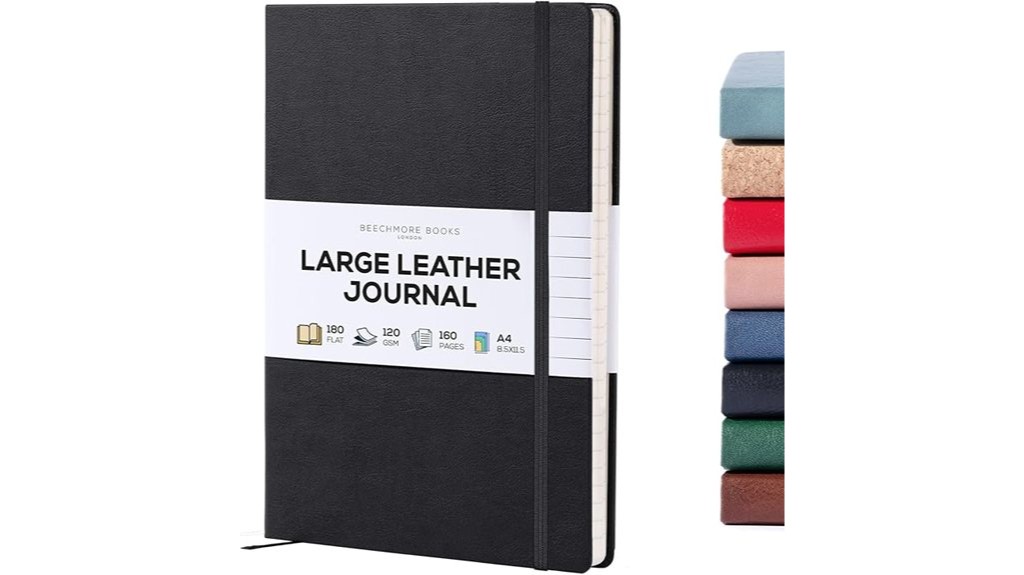
The Beechmore Books Lined Journal Notebook stands out for its spacious A4 design, making it the perfect choice for professionals and students alike. With 160 lined pages crafted from 120 GSM thick, acid-free paper, you’ll enjoy a pristine writing experience, even with fountain pens. The elegant charcoal black faux leather cover adds sophistication, while features like 180° lay-flat binding and a convenient deep back pocket enhance usability. Plus, it comes beautifully packaged, making it an excellent gift. With a 4.7-star rating from over 1,500 customers, you can trust this notebook to meet your journaling and note-taking needs effectively.
Best For: Students, professionals, and writers who need a durable and elegant notebook for journaling and note-taking.
Pros:
Cons:
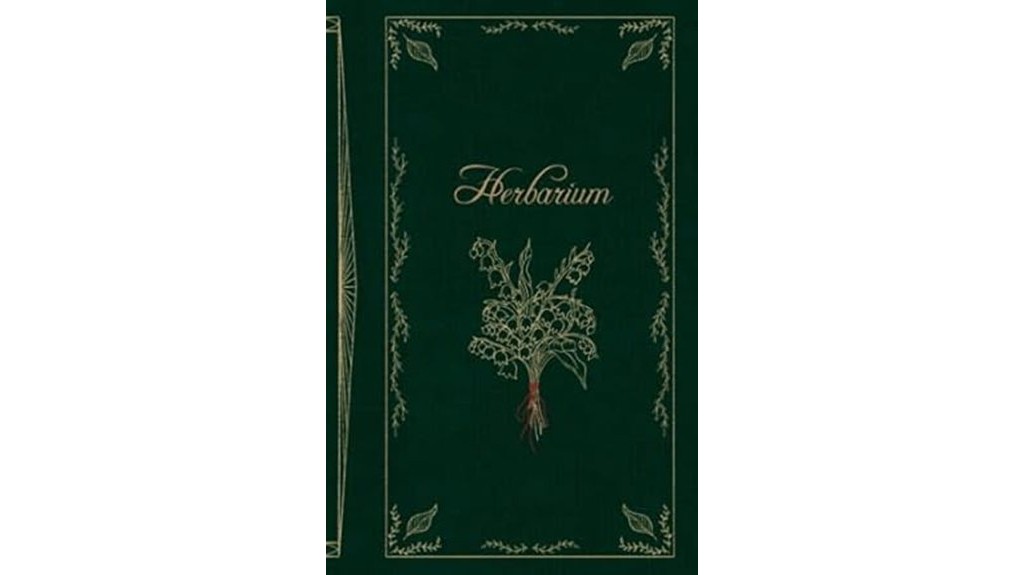
If you’re looking to combine creativity with learning, the “Herbarium: Vintage Inspired Journal for Pressed Flowers” is the perfect choice. With its charming vintage design, this journal features 120 cream-colored pages, an analyzing grid, and an index, making it ideal for documenting your pressed flowers. However, be aware that some users have reported issues with cover quality and print alignment. The journal’s smaller size limits you to tiny specimens, and the pages might rip easily. Still, its educational value shines, especially for kids who love getting hands-on with nature. Enjoy creating your botanical collection with this delightful, albeit imperfect, journal.
Best For: Individuals, especially children and nature enthusiasts, looking for a creative and educational way to document pressed flowers.
Pros:
Cons:

For artists seeking a reliable and versatile medium, the ARTISTO Premium Mixed Media Sketchbooks stand out with their high-quality 160 GSM cardstock. This pack of two sketchbooks offers 120 sheets, each measuring 9×12 inches, perfect for your botanical artworks. The spiral binding guarantees easy page turning, enhancing usability. Designed for various mediums—from watercolors to colored pencils—these acid-free sheets prevent browning over time, maintaining your collection’s vibrancy. Rated 4.7 out of 5 stars, many users praise their durability and smooth texture. Whether you’re a beginner or a pro, these sketchbooks will elevate your herbarium preservation with style.
Best For: Artists of all levels seeking a reliable medium for a variety of art techniques, particularly those working with mixed media.
Pros:
Cons:
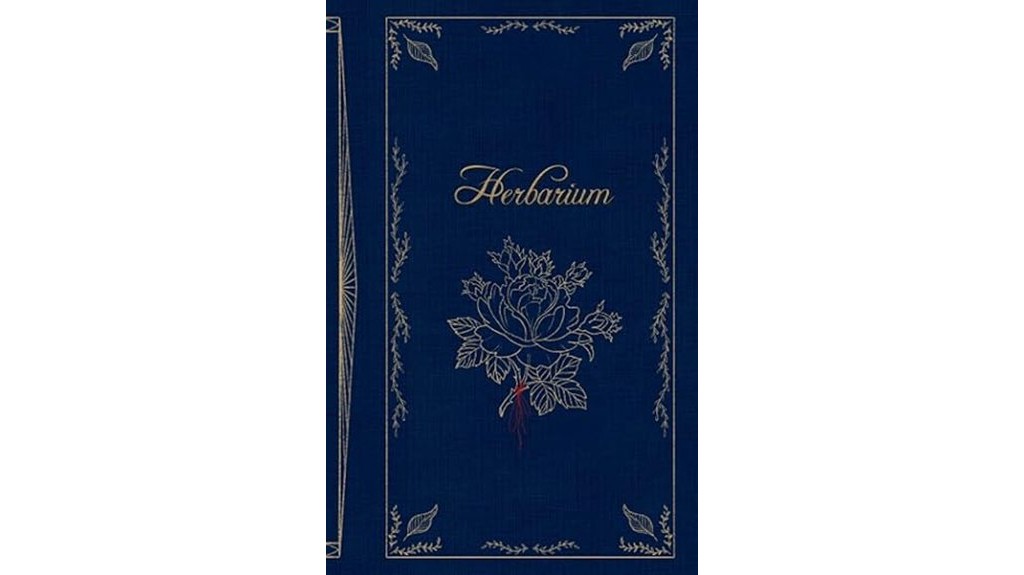
Crafted with vintage charm, the Herbarium Pressed Flower Journal is perfect for artists and nature lovers who want to document their botanical inspirations. With 120 cream-colored pages, this antique-inspired journal invites you to fill it with pressed flowers, sketches, and musings. The included analyzing grid and index enhance its aesthetic appeal, though it’s better suited for artistic expression than traditional herbarium use. While its compact size makes it a delightful pocketbook, some users have reported issues with packaging and receiving damaged copies. Overall, this journal serves as a beautiful canvas for your botanical creativity.
Best For: Artists and nature enthusiasts who enjoy documenting botanical discoveries in a creative and aesthetic way.
Pros:
Cons:
When you’re choosing a herbarium notebook, think about the size and dimensions that suit your needs best. Page quality and thickness can really impact your plant preservation experience, so keep that in mind. Also, consider the binding type and overall design to guarantee you enjoy using it for your plant collections.
Selecting the right size and dimensions for your herbarium notebook can greatly enhance your experience while documenting plant specimens. If you often collect smaller specimens or jot down quick notes, consider a compact notebook around 4 x 5.5 inches. For larger plants or detailed documentation, larger sizes like A4 will give you more space. Aim for a notebook with around 120 sheets to guarantee you won’t need to replace it quickly. Additionally, think about the layout; pages with grids and indexes can streamline your labeling process. Finally, choose a design that complements your style, balancing aesthetics with practicality for effective herbarium work. Finding the right fit can make documenting your botanical collection truly enjoyable.
To guarantee your herbarium notebook withstands the test of time, consider the page quality and thickness as important factors in your selection. Opt for pages that are at least 120 GSM to prevent tearing and support your pressed flowers without buckling. It’s essential to choose acid-free paper, preserving the color and integrity of your specimens over time and preventing deterioration. A smooth texture is preferable because it allows easy specimen adhesion and clear documentation. Pay attention to the overall page count as well; notebooks with more pages reduce the need for frequent replacements. Finally, make sure the page dimensions accommodate the size of typical specimens, providing ample space for larger plants and foliage.
Choosing the right binding type for your herbarium notebook can greatly impact its functionality and durability. You’ll find options like spiral, hardcover, and traditional bookbinding, each affecting how you can use the notebook. Spiral-bound notebooks offer flexibility and ease of page flipping, making it simple to attach pressed flowers without causing damage. If you’re often outdoors, a hardcover option provides sturdiness, protecting your contents during transport. On the other hand, traditional sewn bindings bring a classic appeal but might restrict your ability to lay the notebook flat, which is vital for specimen attachment. Think about how you’ll use your notebook—whether for in-field collection or studio documentation—to determine which binding type suits your needs best.
Design and aesthetic appeal play an essential role in enhancing your herbarium notebook experience. Vintage or antique-inspired designs can transform your collection process into a delightful journey through time. Consider notebooks with cream-colored pages, as they add visual warmth and evoke nostalgia, deepening your connection to nature. Thematic elements like analytical grids and indices serve both functional and artistic purposes, making your documentation more engaging. Pay attention to the binding and cover design; a quality finish impacts durability while elevating the overall visual presentation. Finally, the size and format matter—smaller notebooks are perfect for portability, allowing you to jot down your botanical finds effortlessly. Choose wisely, and enjoy a beautiful space for your plant treasures!
A beautifully designed herbarium notebook not only enhances your collecting experience but also needs to be highly functional. When selecting one, make sure it allows you to securely attach samples, as this is critical for accurately documenting your specimens. Choose a size suitable for the plants you’re collecting; a smaller notebook might limit your options for larger specimens. An included grid or index can greatly improve the organization of plant names and classifications, making it easier for you to analyze your findings. Pay attention to the paper quality; thicker, acid-free pages prevent damage and maintain clarity. Ultimately, an aesthetically pleasing design can inspire your exploration and creativity throughout the herbarium process. Select wisely for the best experience!
While you might be focused on the primary function of a herbarium notebook, additional features and accessories can greatly enhance your experience. Look for notebooks with analyzing grids, indexes, or dedicated spaces for documenting scientific names—these will make organizing your findings a breeze. Protective sleeves or pockets are invaluable for storing delicate plant specimens, ensuring they stay intact. Don’t overlook aesthetic elements like vintage designs or themed illustrations; they can inspire your creativity as you catalog your collection. Consider optional accessories like elastic closures, bookmarks, or pen holders, which boost functionality. Plus, some models offer refillable pages or customizable sections, allowing you to tailor the notebook to suit your unique collecting style.
Choosing the right herbarium notebook not only enhances your collection process but also greatly contributes to your educational journey in botany or herbalism. These notebooks facilitate hands-on learning, helping you grasp plant anatomy and classification through sample documentation. By engaging with herbarium notebooks, you’ll explore and observe natural environments, boosting your critical thinking skills as you identify various species. Pressing and preserving plants enhance fine motor skills and spark creativity, appealing to both children and adults. Plus, caring for and documenting your specimens fosters responsibility, strengthening your connection to the environment. Ultimately, creating a personal herbarium deepens your understanding of ecosystems and biodiversity, linking theoretical concepts to real-life experiences.
You can use regular paper for pressing flowers, but it might not absorb moisture well. To guarantee better preservation, consider using absorbent materials like blotting paper or dedicated herbarium papers for long-lasting results.
To prevent your pressed flowers from fading, keep them away from direct sunlight and humidity. Use acid-free paper for storage and consider placing them under glass or in a protective frame to retain their vibrancy.
For securing dried plants, use a clear-drying adhesive like PVA or Mod Podge. Apply it lightly to avoid oversaturation. Guarantee even coverage so your delicate specimens stay intact and beautifully displayed in your herbarium.
Herbarium notebooks aren’t typically waterproof, but some have water-resistant covers. It’s wise to store them in a dry place and avoid moisture to keep your botanical specimens safe from damage. Protect your collection!
To organize your herbarium collection effectively, categorize specimens by type, location, or date. Use labels for quick identification, keep a catalog, and regularly revisit your collection to guarantee everything’s neat and updated.
When it comes to preserving your botanical collection, choosing the right herbarium notebook makes all the difference. Whether you prefer a compact mini notebook or a spacious A4 option, there’s a perfect fit for your needs. Consider factors like size, binding, and page quality to guarantee your pressed flowers stay vibrant for years to come. With the right notebook in hand, you’ll elevate your herbarium experience and capture nature’s beauty effortlessly. Happy journaling!
